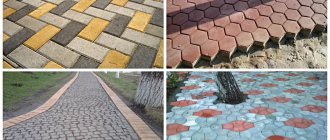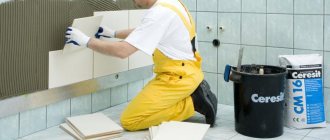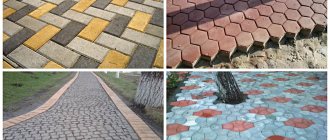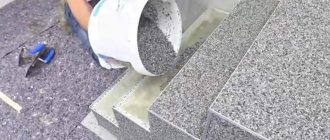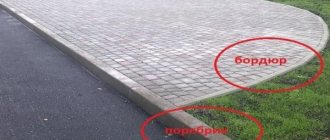Requirements for parquet adhesive
In order for parquet installation to be high-quality and durable, the glue must be:
- Low shrinkage. If the glue sag significantly when drying, the parquet will begin to creak or dry out.
- Elastic. It should give the parquet board moderate flexibility. If this is not the case, then the floor will swell with changes in temperature and humidity.
- Ecologically pure. Toxic mixtures can harm people who live or work in the area.
- Low moisture content. Otherwise, the board will swell and become deformed.
- Long lasting. The service life of the adhesive should coincide with the lifespan of the parquet.
We should not forget about convenience when working. The composition should be easily applied to the surface of the base, and should not leave stains if accidentally applied to the front of the board.
Which glue is better
I want to choose the best composition that will last a long time. But the range of adhesives is represented by a large number of brands, and it is difficult to decide which will be better. You can narrow your search by determining which adhesive mixture is most suitable for parquet and subflooring.
One-component
One-component parquet adhesive is convenient because the package contains a ready-to-use product. It does not need to be further diluted, which saves time during installation. There are 2 types of one-component mixtures available:
- Water based glue. An environmentally friendly, inexpensive and convenient composition where the solvent is water. Dispersion adhesive is used if the width of the board is at least a centimeter and if the surface of the parquet plank adjacent to the base is not sanded. You cannot glue parquet elements made of wood that absorbs moisture: ash, alder, beech, fruit trees. It is also prohibited to use a water-dispersion mixture for laying parquet in damp or unheated rooms - the parquet will absorb water, swell and deform.
- On solvents. Solvent-based adhesive solutions contain no water and are suitable for any wood. When choosing adhesive for parquet under plywood, you should give preference to a water-free mixture. The composition provides high adhesion to the surface, so the parquet can withstand large mechanical loads and temperature changes. Recommended for wood species prone to moisture absorption.
When compared, it may seem that formulations with solvents are better, but this is not always the case. Adhesive mixtures of this group are toxic and have a pungent odor. When working with them, you must use protective masks to protect your lungs. In addition, solvents are flammable; mixtures cannot be used when laying parquet near fire sources.
Two-component
A quick-drying, elastic and durable two-component parquet adhesive suitable for all types of wood and can be used on any substrate. The product does not contain solvents, and polymerization occurs by mixing the hardener and the polymer base. Craftsmen often choose to lay parquet boards:
- Polyurethane. Two-component polyurethane adhesive increases the strength of parquet by 30-40%. Does not contain toxic components.
- Polyurethane-epoxy. Gives less additional strength (15-20%) and has an unpleasant odor before drying. It is cheaper than polyurethane.
Two-component products have only one drawback - high cost. But this compensates for the almost complete absence of shrinkage and high strength. Parquet floors made with polymer mixtures will last a long time.
Other formulations
Other groups of products can also be used for gluing parquet. Let's look at what other glue you can use:
- Universal. Made from rubber or natural resins. Hardens quickly. Rubber adhesive has low adhesion. If you plan to use this mixture, you need to make a special screed and prime the base well.
- Alcoholic. The alcohol-based product is odorless, easy to use and dries quickly. Good adhesive for plywood and moisture-absorbing wood. Can be used for laying on heated floors.
- PVA. The adhesive mixture based on polyvinyl acetate dispersion is non-toxic and has high moisture and heat resistance. Used for parquet made of wood of all species. Suitable for laying decor on any base.
In order for the parquet to last as long as possible, you should take the choice of adhesive seriously.
Having decided on what basis to buy a product for laying parquet planks, you can move on to choosing an adhesive.
What adhesive mixtures are used
Parquet can be glued using a variety of adhesives. There is a huge range of them on the market today; the substances differ in types, manufacturers, volumes, prices and parameters.
Basic requirements for any adhesive composition:
- Minimal shrinkage - the composition should not decrease in volume when drying.
- Elasticity - during operation, parquet can change its linear dimensions (thermal expansion and hygroscopicity of wood play a role here). The glue should compensate for the changes, eliminating the appearance of squeaks and peeling.
- Long service life - parquet is considered one of the most expensive flooring options, so no one wants to change it every 5 years.
- Minimum volume of water - natural parquet is hygroscopic, so direct contact with water is destructive for it.
- Environmental safety – absence of toxins, unpleasant odors and harmful fumes that can negatively affect people’s well-being and health.
- Maximum adhesion to concrete - especially important where heavy loads on the coating are expected.
The most popular manufacturers on the market:
- Artelit is a rubber compound that can be used to glue parquet to any substrate, suitable for heated floors and surfaces that are affected by vibration.
- Moment – glues any types of parquet (wood, plywood, laminate), dries quickly, is resistant to moisture, durable.
- Coswick is an elastic polyurethane waterless adhesive for universal use.
- Bostik Tarbikol is a vinyl water-dispersion adhesive that sets quickly and is used for gluing small-sized parquet boards that have a rough working surface.
- Kraft is a durable two-component composition, suitable for massive slats.
- Kiilto is a PVA-based composition, environmentally friendly, non-flammable, hardens quickly, ideal for a piece set of small lamellas.
- Super-Grip is an epoxy composition that can withstand severe temperature changes. Glues any material.
- Murexin is a polyurethane two-component adhesive, universal, providing a high level of reliability.
- KS is a universal composition with mineral additives, non-flammable, non-toxic, glues to any surfaces and bases.
- Axton is a water-based dispersion adhesive for parquet, safe and environmentally friendly, very durable.
- Slim – suitable for gluing any type of parquet onto concrete/slabs. Durable, two-component type.
- Repox is an epoxy-polyurethane composition, used for work on any substrate, demonstrating a high level of adhesion.
- Stauf is a line of compositions based on water, alcohol, and polyurethane.
- Eurocol Frodo 148 is a universal reactive adhesive, used for any board and any substrate.
- Adesiv pelpren is a two-component parquet composition; any elements can be placed on it.
How to choose glue according to the coating:
- If plywood is placed on concrete, the glue must be elastic, with a high level of adhesion; a two-component composition or a solvent-based one is best.
- Solid board - it is better to choose two-component boards based on rubber.
- For piece parquet - PVA compositions.
- The width of the lamella - if it is less than 12 centimeters, you can choose any composition; if it is more, it is better to choose a substance based on polyurethane.
One-component
Such adhesive compositions are easy to use, are sold ready for use, and do not require dilution or preparation.
The main types of one-component mixtures:
- Water-based glue is inexpensive, environmentally friendly, and uses water as a solvent. Suitable for mounting boards whose width is at least a centimeter, and the base of the lamella is not sanded. It is forbidden to use wood that can absorb moisture (beech, alder, ash, fruit trees); the composition is not suitable for forming flooring in unheated or damp rooms.
- Solvent-based – there is no water in the composition, universal adhesives provide maximum adhesion, making the parquet able to withstand considerable loads and temperature changes. This glue can be used for wood that absorbs moisture.
The disadvantage of adhesives with solvents is toxicity and an unpleasant pungent odor. Personal protective equipment is used during work. It is forbidden to use this type of glue near a fire source, as solvents are flammable.
Two-component
Such compositions are distinguished by their elasticity, strength, ability to dry quickly, and versatility both in terms of base and coating. The products contain no solvents; polymerization occurs by mixing the polymer base and hardener. All adhesives of this type are quite expensive, but they do not shrink and guarantee a long service life of the floor.
The most popular two-component adhesives:
- Polyurethane – increases the strength of parquet by an average of 35-40%, without toxins.
- Polyurethane-epoxy - additionally strengthens by 15-20%, has an unpleasant odor (while it dries), is cheaper, and can be fragile.
Requirements when choosing a two-component glue: elasticity, moisture resistance, time of use (usually indicated on the can), dosage. Usually the entire volume of the jar is mixed at once, otherwise the components may not be calculated and the glue simply will not harden. So, if the composition has not hardened within 3-4 hours, it is better to glue all the lamellas again.
Other formulations
When working with parquet glued to a concrete base, different types of adhesives can be used. The most popular ones are described above; below are substances that are also on the market and are used quite often.
Other types of adhesive bases for parquet on concrete:
- Universal - based on natural resins or rubber, hardens quickly, exhibits low adhesion, a special screed is made under it and primer is applied.
- Alcohol is an odorless substance, comfortable to work with, and dries quickly. Suitable for moisture-absorbing types of wood and plywood, relevant for heated floors.
- PVA - based on polyvinyl acetate dispersion, without toxins, demonstrates high resistance to temperature, moisture, suitable for parquet of any type, installation of decor, etc.
- Hybrid - based on silane-modified polyurethane, elastic, durable, without restrictions on use in terms of base and coating materials, without water and solvents.
Review of popular brands
Let's consider the popular tools that the construction market offers:
- Artelit. Rubber based. Suitable for gluing parquet flooring to any substrate. Can be used for heated floors and on surfaces where there is vibration.
- Moment. Bonds all types of parquet finishes: plywood, wood, laminated coverings. Quick-drying, durable, moisture-resistant.
- Bostic Tarbicol. Water-dispersible vinyl. Tarbicol sets quickly. Designed for gluing small-sized parquet tiles with a rough working surface.
- Coswick. Anhydrous elastic polyurethane composition. Universal, suitable for all types of coatings.
- Kiilto. On a PVA basis. Non-flammable, environmentally friendly, hardens quickly. Kiilto is used for a piece set of small parquet floors.
- Craft. Two-component, durable. Can be used for laying massive elements.
- Super-Grip. Epoxy adhesive that can withstand large temperature changes. Glues any materials.
- KS. Universal with mineral additives. Non-toxic, non-flammable. Connects any base.
- Murexin. Two-component polyurethane. Reliably glues any coating.
- Slim. Designed for gluing all types of parquet boards to concrete or building slabs. Two-component, durable.
- Axton. Water dispersion for parquet. Eco-friendly, safe for health. Glues firmly.
- Bona. Polyurethane, two-component, universal.
- Stauf. A line of adhesives based on alcohol, water or polyurethane.
- Repox. Epoxy-polyurethane, designed for various substrates. Has a good adhesion rate.
- Adesiv pelpren. Two-component parquet adhesive. Using the product, you can lay elements of any size.
- Eurocol Frodo 148. Reactive adhesive for mounting any board on all types of substrates.
Having familiarized yourself with the assortment of construction companies, it is worth considering another nuance of choice - the characteristics of the bases for gluing.
The choice of glue depending on the coating
Before purchasing glue, you need to evaluate the type, nature of the work and size of the materials:
- Laying plywood on concrete. Adhesive for parquet on concrete screed must be selected with high adhesion and elasticity. Solvent-based or two-component formulations are suitable.
- Gluing solid boards. Mixtures with rubber or two-component ones are recommended.
- Piece set. For block parquet, regardless of the nature of the base, a composition with PVA is suitable.
Taking into account the characteristics of the coating and the characteristics of the floor base, you can choose the optimal adhesive composition that will ensure the strength and durability of the glued parquet.
Basic ways to lay parquet boards on concrete floors
There are three installation technologies:
- Floating floor. This is when the material is laid without any fasteners.
- For the adhesive composition. Typically used on large areas.
- For fasteners: screws or nails.
Attention! The last option is laying on plywood.
Floating floor
This option of laying parquet on a screed is considered standard if the rooms are small. This technology got its name due to the fact that the cladding is not attached to the base surface. It's like she's floating.
Here is the sequence of operations:
- A polyethylene film 0.2 mm thick is laid on top of the floor. Its task is to protect the parquet board from moisture emanating from the floor base. The film is laid so that its edges cover 10 cm of the walls in height.
- The cork lining is laid. These are 1x1 m sheets that are also not attached to the floor. Their task is to hide uneven floors.
- Board installation. These are lamellas 1 m long. The width of the offered models is different. The design includes a tongue-and-groove connection.
Attention! Between the parquet and the walls of the room you need to leave a space of 1 cm. This is a compensation gap, which, when humidity rises, will prevent the material from resting against the walls, and therefore warping.
Laying begins from the wall farthest from the door. Installation is carried out perpendicular to the wall where the window is located. Thus, in the rays of incident daylight, the joints between the slats will not be visible.
The first row section is laid near the wall with the spike facing it. Plastic or wooden wedges are first installed on the wall surface. They will provide clearance. A second one is assembled, which is completely inserted into the first. That is, the tenon of the second row is inserted into the groove of the first. And so on to the opposite wall. If the last line of boards does not fit in width, they are cut to the required size.
After installation is completed, the gaps are closed with skirting boards.
Installation of adhesive-based parquet boards, which glue to choose
Today, manufacturers offer three types of adhesives used for attaching parquet boards.
- Dispersive. Natural water-based material. It is used for installation of wood, which resists swelling well.
- Polymeric. High strength, versatility, good soundproofing qualities - this characterizes this type of glue.
- Two-component reactive. Has the highest strength qualities. This is what craftsmen use today more often than others when the task is to lay parquet boards on a concrete base.
Laying parquet on a concrete screed using this type of fastener differs from the previous technology in that the adhesive composition is simply applied to the floor with a spatula. And the parquet board is already assembled on it. The cladding usually dries within a day, after which it can be used.
Additional tips for choosing parquet adhesive
When choosing a composition, you additionally need to take into account the load on the floors:
- Huge pressure. A two-component adhesive with high adhesion is optimal.
- Dimensions of parquet planks. A wide parquet board adheres well to the main surface, but under load, lateral tearing is possible. You need glue with high elasticity, preferably polyurethane based. For small slats, a rubber compound is suitable.
When laying parquet in rooms with a heavy load on the floor, you do not need to save on building materials. By purchasing compounds at a discount, you can get fake adhesives that do not have the necessary strength characteristics. This will certainly affect the quality of the parquet installation.
Is it necessary to prime the surface?
Despite the fact that some types of adhesives indicate that they can be used without priming, this stage of work should not be neglected. Application of primer will provide:
- binding of dust particles remaining on the surface;
- uniform absorption of glue;
- adhesive strength.
A double primer is applied using a roller. After applying the first layer, you need to wait for the composition to dry and repeat the procedure. Installing a parquet board on a primed base will be stronger.
Preparing the concrete floor plane for laying parquet
Laying parquet boards on a concrete floor begins with preparing the latter. Firstly, the floor base should not have any flaws: cracks, chips or gouges. If any are present, they must be gotten rid of by any means. Usually defects are repaired with repair compounds. If they are large, then a screed is poured on top.
And other requirements:
- The surface difference should not exceed 2 mm per 2 meters of the length of the floor base.
- Deviation from horizontality – 0.2%.
- Humidity – 5%, no more.
- The temperature inside the room where the board is laid is +18-25C, humidity 40-60%.
- The grade of concrete mortar for the screed is no less than M150.
Before laying, the floors must be cleaned, especially from dust, for which a construction vacuum cleaner is used. Particular attention should be paid to the joints (corners) of the floor and walls.
Basic rules for laying parquet boards
Before laying parquet flooring, you need to check the humidity and temperature of the concrete screed. It is better to do this using a special device. Particular attention should be paid to measurements in corners where there is high humidity.
If you don’t have the device, then you should focus on the approximate hardening time of the concrete – about 2 weeks. The humidity level required to continue finishing work should not exceed 5%.
Glue mounting method
Laying this way is quite reliable. You just need to prepare a large notched trowel and a small tool. Laying algorithm:
- parquet glue (slightly larger than the size of the board) is applied to the screed or other base that has dried after the primer with a ridge spatula;
- parquet is laid on the surface coated with adhesive and lightly fixed with light pressure (excess protruding from under the plank is immediately removed).
If the parquet slats are small, then it is allowed to lay out 3-4 parts of the pattern at once.
Option without rigid fixation
No glue is used. The joints of parquet flooring are connected using a locking system:
- a backing is laid on the floor (the joints of the material are secured with tape);
- lay out the first lamella with its upper part facing the wall;
- lay the boards parallel in a row, lightly tapping them with a wooden hammer;
- the next row of parallel elements is laid with an offset of ½ lamella.
Fixation of parts is strong. After completing the last row, you can walk on the parquet.
Using additional fasteners
Used when laying thick parquet flooring:
- parquet tiles are laid on glue, fastened with locks;
- A self-tapping screw is screwed in every 30-35 cm along the surface of the coating.
This fastening method is characterized by increased strength.
How to lay parquet on a concrete floor
The lamellas are laid on the concrete screed in the same way as on other surfaces. But here you need to take into account several nuances:
- lay the elements on a durable cement screed;
- before laying, check the moisture content of the concrete (no more than 5%);
- glue for parquet boards on screed must be selected with high adhesive properties.
Laying a parquet floor yourself is not difficult. But to ensure the strength and durability of the decorative coating, you need to select the appropriate adhesive and prepare the base.
Installation of parquet boards: main rules
In order to glue a parquet board to a concrete floor efficiently and beautifully, you need to study some rules and features of the technology.
How to properly glue parquet to a concrete floor:
- Careful preparation of the concrete screed for work - you can install the parquet board at least 28 days after pouring the floor, on a flat base without defects (except for the smallest ones, since they will be covered with a layer of glue and insulating materials).
- It is advisable to lay layers of hydro/vapor barrier between parquet and concrete. Under certain conditions, an additional thermal insulation layer is often laid.
- During installation, you can use bitumen mastic, which acts as a waterproofing and primer at the same time.
- The glue must be chosen correctly, taking into account the characteristics of the surface, wood, the size of the lamellas, and other important conditions.
- The humidity of the screed should be in the region of 3.5-4%. It is advisable to measure it with a device, since this is an important parameter for laying parquet.
- Mandatory level control - the base must be pre-leveled and during the work the master must constantly check the lamellas to ensure that local differences do not occur, which then create a creak and contribute to deformation and destruction of the coating.
- Priming - a special composition is applied to the concrete, which largely affects the strength and reliability of fixing the parquet to the glue. It is advisable to select a primer in accordance with the adhesive composition.
